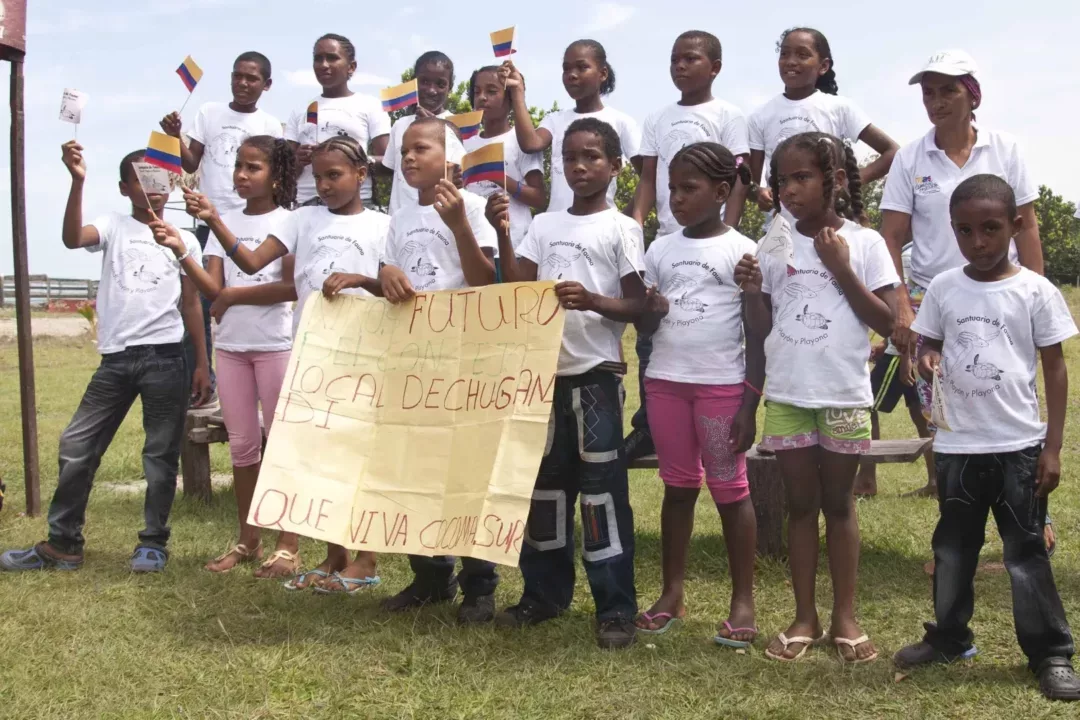On December 18, 2013, Colombia formally declared Acandi, Playon and Playona Wildlife Sanctuaries as its newest national park, adding 26,232 hectares to the country’s marine protected area system, and providing further protection for the world’s largest sea turtle, the leatherback turtle, Dermochelys coriacea, which is in danger of extinction. The new park will also help provide refuge for another turtle species, the hawksbill, Eretmochelys imbricate, which is also endangered.
With its designation, Acandi, Playon and Playona becomes the Colombia’s 58th protected area managed by the Natural National Parks of Colombia. The park’s declaration was strongly supported by local communities, including the Black Communities Councils of Tolo River Waterhsed and the Southern Coastal Area (Cocomasur), River Basin Acandi Seco, El Cedro and El Juancho, Cocomaseco and Acandi River Basin and the Northern Coastal Area, Cocomanorte, together with WWF Colombia. The communities will be involved in the park’s management through a coordination mechanism that will be established between the three Community Councils and the National Parks Authority.
“The process for declaring Playón and Playona as a protected area for the conservation of Dermochelys coriacea and Eretmochelys imbricata turtles, considers citizen participation as a right, as well as a very important tool to guarantee the success of protection activities undertaken by the local community with the support of environmental authorities,” said Julia Miranda Londono, Director of the National Natural Parks of Colombia. “This will enhance the influence and leadership of civil society in conservation policies and activities in the region.”
The communities surrounding La Playona and Playon Acandi have adopted the hawksbill turtle as a symbol of the region and its cultural, ecological and tourism-related heritage. Since 1993 awareness activities with the aim of conserving the species have been undertaken. That same year, the “Festival of the Hawksbill Turtle” was launched.
The two turtles’ migration habits are of great relevance to the new park, as conservation efforts developed at the local level can impact the entire Caribbean region – mark-recapture studies have shown that some of the female turtles found in Colombia spend part of their time in waters off Costa Rica and Mexico.
Acandi, Playon and Playona also helps maintain marine biodiversity, as it is strategic for artisanal fishery populations of the Darién and Urabá. More than 80 fishery resource species are used by local inhabitants, including the Sierra, Cojinúa (snook and bearded), as well as different species of shrimp.
The declaration is central for Colombia in moving towards national achievement of the Conservation on Biological Diversity (CDB) Aichi Target 11, which states that at least 17% of terrestrial and inland water areas, and 10% of coastal and marine areas are conserved through effectively and equitably managed systems of protected areas by 2020. With Acandi, Playon and Playona, the National Parks System of Colombia has expanded its total area to 14,254,144 hectares, increasing the coastal marine area to 1,379,750.64 hectares (10 coastal and marine protected areas), covering 1.4% of the country’s marine area, and 12,874,394 hectares of terrestrial area (48 protected areas), covering 11.2% of the country.
Source: http://www.iucn.org/about/work/programmes/gpap_home/?14328/New-national-park-declared-in-Colombia
